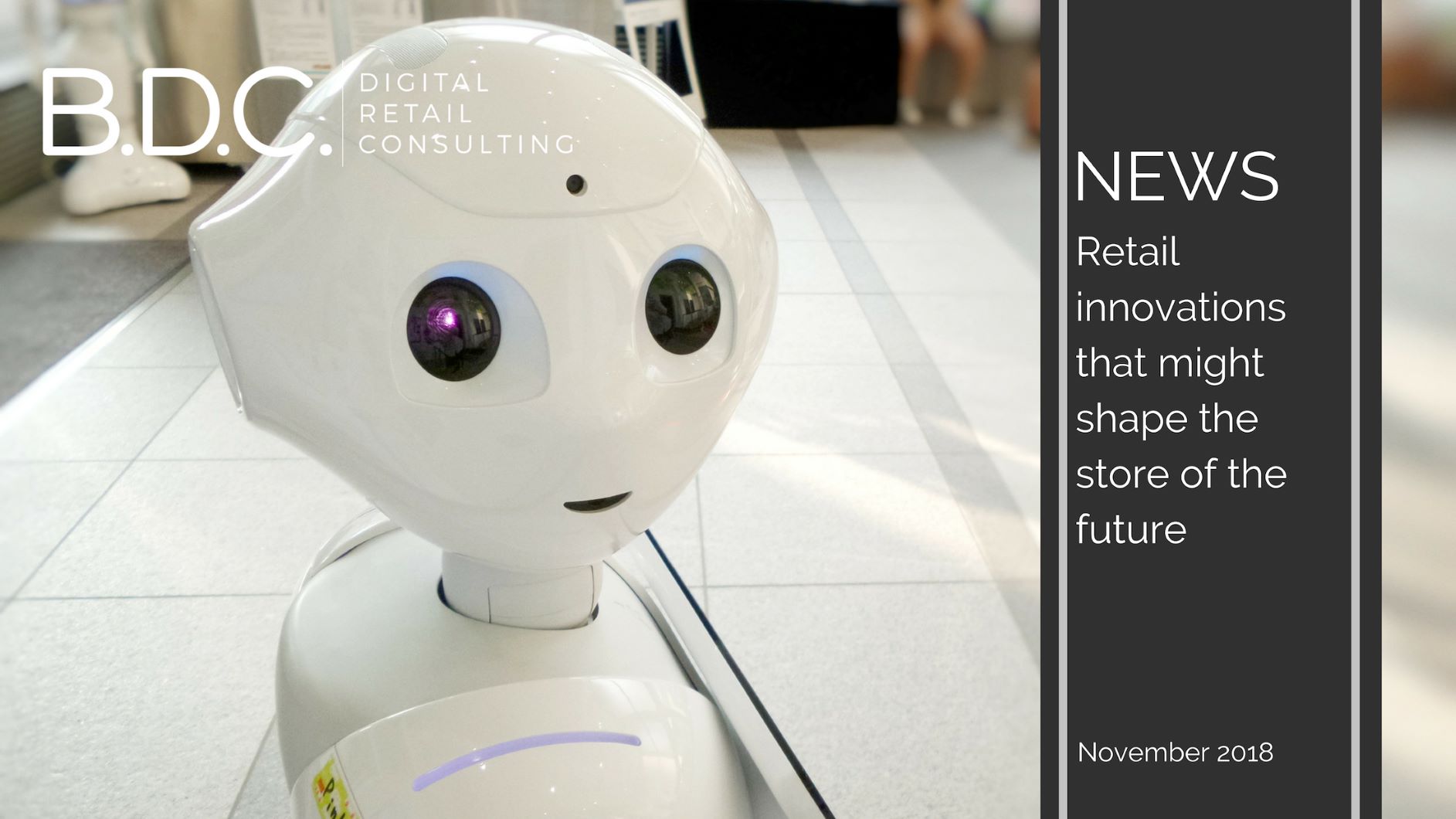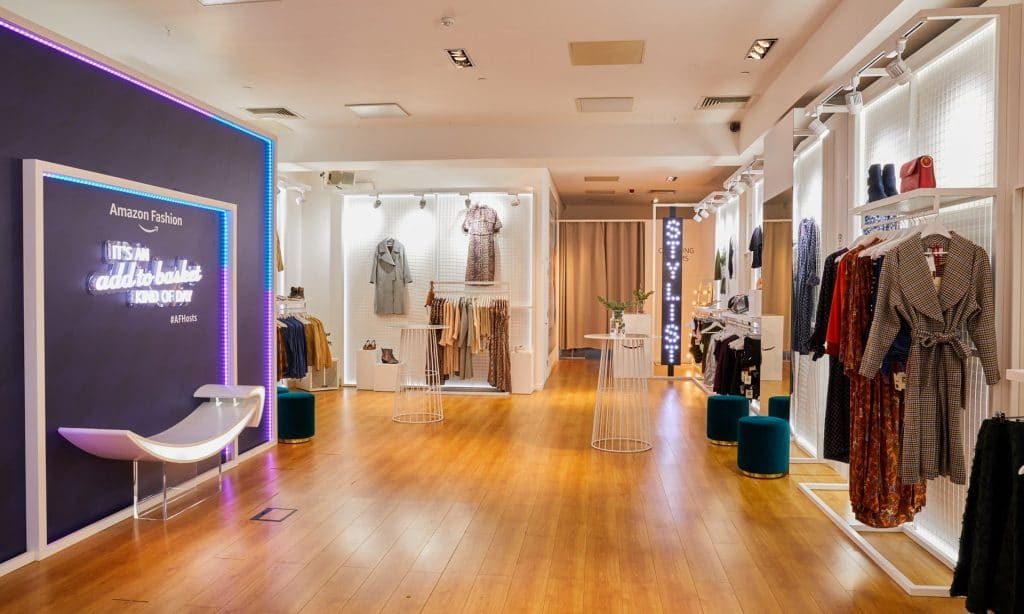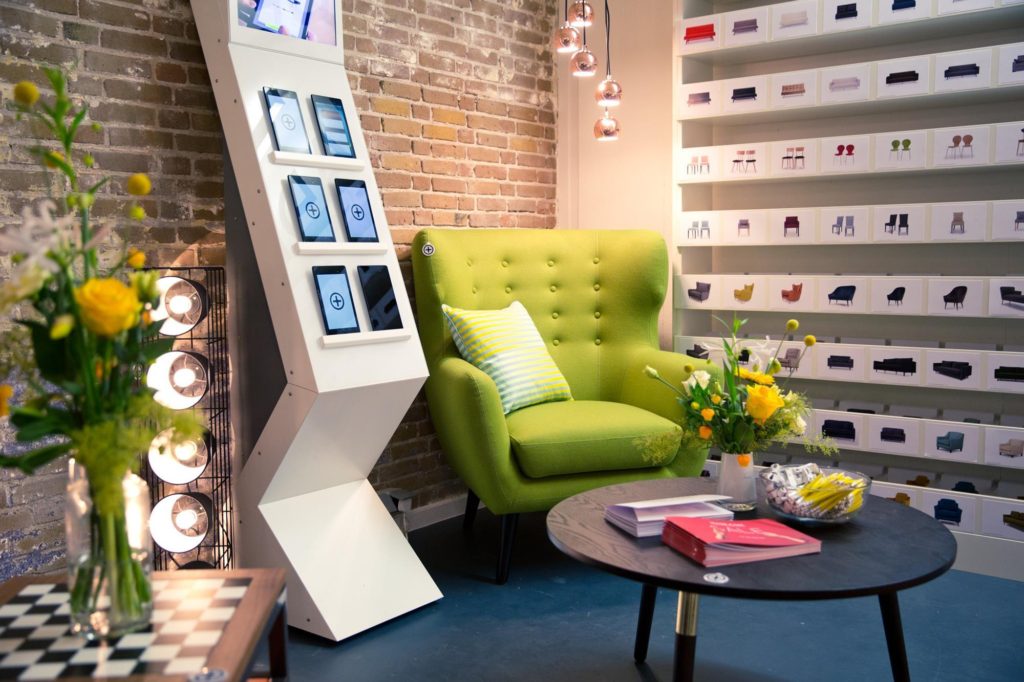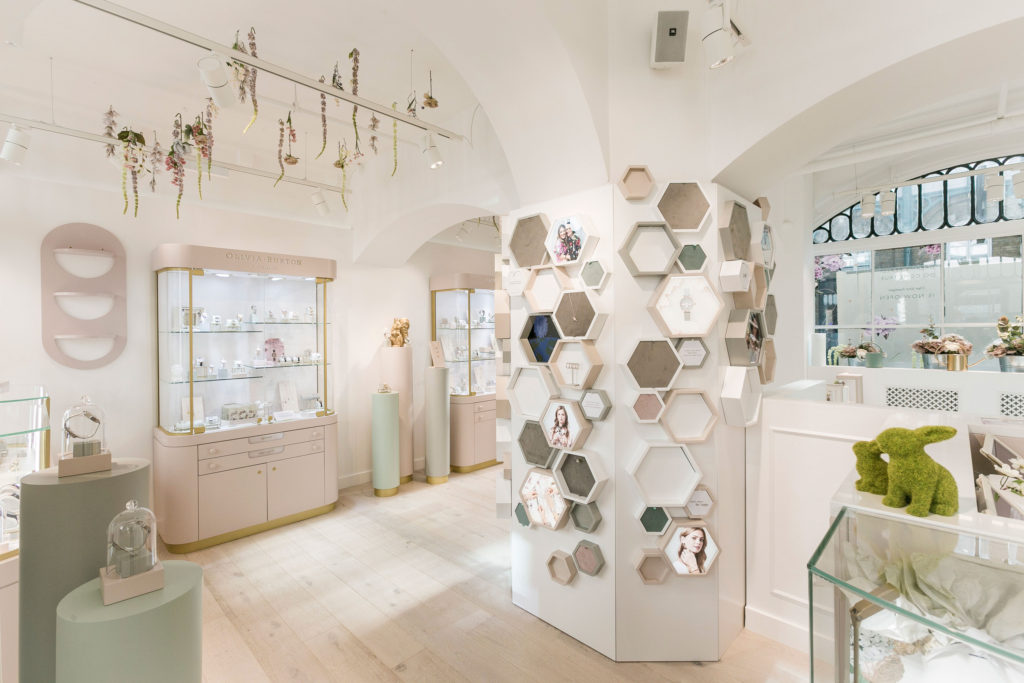
01 Nov Retail innovations that might shape the store of the future
Nowadays, digital transformation is crucial for many retailers. One of their biggest challenge is to quickly adapt in order to face competition and it starts with improving or re-inventing customer experience. This month, B.D.C. looks more closely to retail innovations that might shape the store of the future.
Last month, we were talking about what could give brick-and-mortar retailers some leverage over online rivals. The failure of some leading department stores like Debenhams or House of Fraser with, in contrast, the success of experiential retailers like Selfridges are signs that physical retailing must be more experiential and reinvent itself. Indeed, one of the first step is to transform stores to meet with customers’ ever changing demand. Meanwhile, old-fashioned shops that won’t adapt will be left behind and eventually disappear.
Customers now visit stores for their services
Today if a customer comes to visit a store, he expects more than products lined up on shelves. What makes retailers stand out is their ability to provide a seamless or memorable experience to shoppers. Selfridges for instance managed to diversify its customer experience offering. In February and for a month, Selfridges opened in its London flagship the world’s first in-store boxing gym where customers could train and book boxing classes. This week, it introduced a new unique experience by launching the only and permanent free indoor wooden skate bowl in the UK.
Shoppers are unceasingly looking for more rapidity, ease and convenience, and that is what they want to find in-store. Personalisation stands, personal shoppers, workshops, testing areas, check-out-free apps… For instance, the new Decathlon London flagship, opened in June in Surrey Quays, offers customers a huge playground of 10,000 sqm. Visitors can try many products in interactive sports testing zones: kids bike testing area, mini aquarium, golf simulator, climbing wall, mini badminton court and table tennis stations. Also a full-size multi-sport playing field on the rooftop can be used free of charge.

Source: Amazon
Another trending format among retailers: pop-up stores, a way to inspire shoppers and draw their attention. Many of them offer specific and exclusive ranges of products. Last week from October 23rd to 27th in Baker Street, Amazon opened a pop-up store dedicated to its fashion branch. It includes garments from its own fashion brands like Find. or Truth & Fable and from some of its most innovative and best-selling brands like Calvin Klein or Tommy Hilfiger. A new selection of clothes is displayed each day. Plus, during those five days, they could enjoy various activities, workshops and services: beauty bars, influencers’ presence, juice bar, masterclass…
Similarly, Argos opened last September a pop-up focused exclusively on its Home collections, along with many worshops and masterclasses as well. Before Christmas, the online marketplace Notonthehighstreet will also open two pop-up stores in London. It will display a curated collection of gifts from its 2018 Christmas collection from over 200 of its sellers.
Offline and online channels must be part of one single experience
Nowadays stores become a mean to increase online traffic, and the reverse is true. Yet, considering for instance that only 31% of retailers offer truly omni-channel loyalty programs, extra efforts to merge the online and physical are required. We looked at how retailers can bring traffic to their channels and catch customers’ attention.
In fact, we saw more and more showrooms opening in cities. Let’s take the example of Made.com. Originally a pure-player, it has a customer-centric business model and established a large customer community called Unboxed. Primarily, the retailer was taking pictures of the interior of some of its customers. Now, members upload their own pictures to the platform which offers free extra promotion for the brand.
It now features its furniture and design in its showrooms. Customers are able to try and touch products, to receive advice from the team and to bring color and tissues samples back home while still enjoying the convenience of online shopping. Indeed, no product is available for sale. Instead, computers are available for shoppers to directly order online while getting support and advice from the team.
Source: Made.com (left), Olivia Burton (right)
Plus, stores become a place of influence and advertisement. Hashtags, social walls, photo-booths thrive in brick-and-mortars. User generated content and content sharing allow retailers to bridge physical and online experiences. In its new Covent Garden flagship, fashion accessory brand Olivia Burton does exactly that. It wants people to “come in store and have something to engage with”, as its marketing manager Natalie Egan said. The store has been designed to be immersive, but most importantly, “Instagrammable”. Coffee bar, photo-booth, dream wall, workshops will keep customers entertained and eager to capture the moment. For the brand, influencers are the best form of advertising, much more dynamic than traditional formats.
How the customer journey will look like in the store of the future?
From their entrance, shoppers will be identified thanks to visual recognition camera. Intelligent screens will display product information and holograms will bring shop windows and shelves to life. Customers will be greeted and assisted by robots. They will virtually try on outfits in 3D by interacting with connected mirrors. Then, they will order their products online with a tap or just leave the store with their articles.
Yet some of these technologies have been implemented in stores already. Farfetch for instance, which unveiled last year its test version of the store of the future, is trying out an RFID-enabled clothing rack that detects which products customers are looking at and auto-fills their wishlist. Also, a digital mirror allows them to view their list and ask for items in different sizes or colours.
The American luxury department store Neiman Marcus is using the world’s first digital mirror – the MemoryMirror, created by the startup MemoMi. It allows shoppers to change virtually the color of what they were currently wearing. Plus it records every outfit they tried on, so they can compare or bring home the recording to decide later.
In France, the new grocery store 4 Casino is also testing technologies of the future such as voice recognition through a large digital stand installed in the center of the store. Called “OK Max”, it aims to help shoppers easily find the products in the store.
Since its creation in 2009, B.D.C. assists retailers and leading brands such Hermés or Petit Bateau for example. We support them to define digital strategies, to benchmark the newest and relevant technologies for their business and to expand internationally (online and offline).
You can contact us here!
Subscribe to our newsletter to get the last insights on connected retail !



